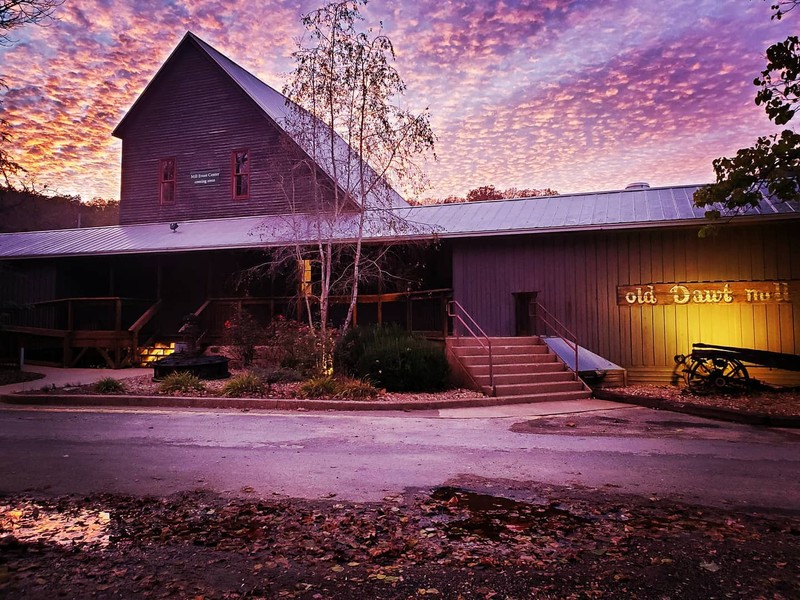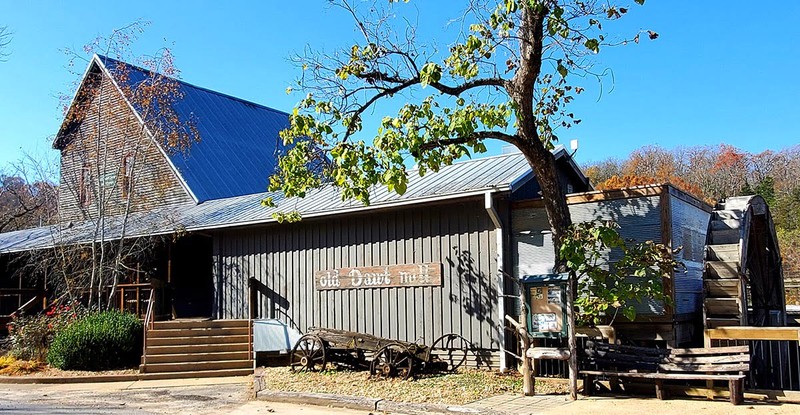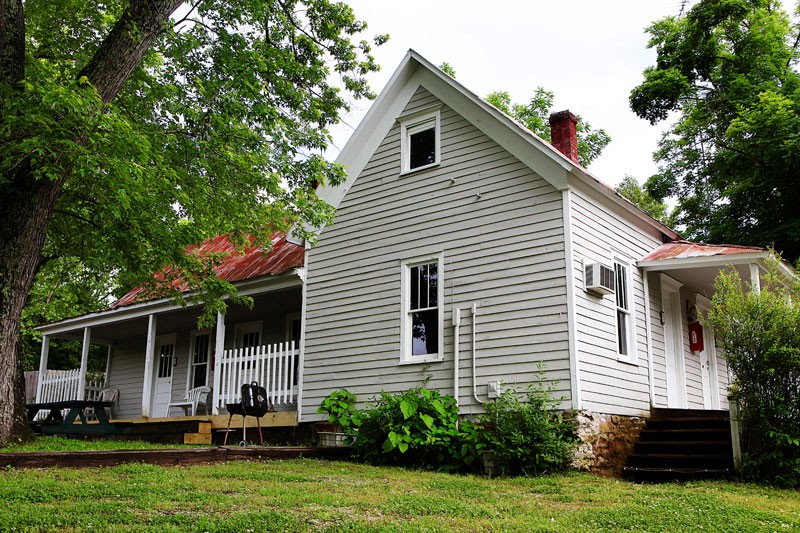Dawt Mill (Dawt Mill Resort)
Introduction
Text-to-speech Audio
Now known as Dawt Mill Resort, the former grist mill stood as Ozark County's last one in operation, milling into the late twentieth century. The reconfigured resort stands as the remnants of the mill built in 1900, although milling in the area dates back to the end of the Civil War. The mill sits on the high banks along the North Fork of the White River. Its success bred growth for the area, eventually resulting in a community that included a Blacksmith, store, church, and hotel. Dawt Mill continued in operation through the 1970s, although by then, it only produced a fraction of what it did during its turn-of-the-century heydey.
Images
Dawt Mill

Dawt Mill

Hodgson House at Dawt Mill

Backstory and Context
Text-to-speech Audio
Milling in the Dawt, Missouri area dates back to 1866, but more earnestly in 1874 when President Grant awarded a patent to Rhuma J. Isom for the land where Dawt Mill stands today. The mill ownership changed hands a few times until John C. Cauldwell purchased the property and mill in 1892, who subsequently designed a new damn and mill; construction finished on both in 1897. A fire destroyed the mill between 1897 and 1900, purportedly because a competing mill, named Friend Mill, paid a young boy $10 to burn the mill down. In 1900, master millwright Alva Hodgson, who had previously built the Aid Hodgson Mill in Ozark County, acquired the property.
The Hodgson-run Dawt Mill quickly realized success, eventually milling twenty-four hours a day. Farmers arrived in wagons filled with grain, ready to be ground into flour. Because farmers often had to wait, they had reason to stay in town. Besides the mill, Hodgson operated a cotton gin and store that visiting farmers frequented; the store also housed the Dawt Post office from 1907 to 1934.
While fire destroyed the first mill in 1897, flooding proved far more detrimental to the mill's overall health over the years. The first two floods occurred in 1905 and 1918. In the 1920s, the Bushong family took ownership of the mill; they operated it twenty-four hours a day except on Sundays. Farmers routinely camped under their wagons, waiting for their turn at the mill. As a result, enterprising business people opened stores, and a church opened near the mill. Charles Thompson took over in the 1930s. Not only did Thompson keep the mill salient during the Great Depression, but he also kept Dawt Mill operational in the 1940s when an abundance of nearby mills began shutting down when farmers transitioned from grain farming to cattle farming.
Thompson sold the mill in 1945 to Ray and Fannie Hunt, who added gas pumps and ground feed for cattle to the property. Hunt died in 1964, but Fannie continued to operate the mill until she sold it in 1967 to Wayne and Ruth Dinnell. After that sale, only infrequent milling took place as the Dinnells began the site's transition to a vacation site. The couple repaired and re-painted the mill, and they landscaped the property. Additionally, they installed picnic areas, public restrooms, and camper hook-ups and constructed a log cabin. Finally, although the original mill drew its power from turbines, the Dinnells added a waterwheel to the mill as tourists expected to see that when visiting a mill. Yet another flood in 1969 washed out the dam, but the mill survived. The Dinnells continued to grind cornmeal until 1971, which they sold at the mill.
The Dinnells sold the mill to James and Delores Fisher in the early 1970s, who sold the mill to Dr. Larry and Beth Walker of Biloxi, Mississippi. Dr. Walker had grown up in Ozark County. They owned the property until 1987. After a flood in 1982 resulted in water thoroughly covering the mill race, the Walkers leased the mill to a corporation. Joe Ben Stone purchased Dawt Mill in 1987 and continued the mill's operation, making several structural improvements. However, the dam took another hit during a flood in 1992 when sections of it failed. After replacing the dam in 1993, a severe flood later that year damaged the mill's support beams.
In 1995, Dr. Ed Henegar, the only physician in Ozark County for more than 20 years, purchased Dawt Mill. Henegar started the mill's transition into a full-fledged tourist attraction, refurbishing the mill, Hodgson home, log cabin, and general store (including the section where the post office once operated). Floods ravaged the historic mill in 2002 and 2006, leading to its closure again in 2008 for reconstruction. It reopened in June of 2009 as Henegar's Grist Mill Restaurant with a view of the North Fork River. The Grist Mill Restaurant closed after enduring substantial damage in the latest flood, a historical event in the Spring of 2017; it has since reopened.
Sources
"Dawt Mill." Ozark County Chamber of Commerce. Accessed July 28, 2022. https://www.ozarkcounty.net/dawt.
"Dawt Mill." Tim Layton Fine Art. Accessed July 28, 2022. https://www.timlaytonfineart.com/Dawt-Mill.
"Dawt Mill." West Plains Missouri: Historic Mills. Accessed July 28, 2022. https://explorewestplains.com/dawt-mill/.
"History." Dawt Mill. dawtmill.com. Accessed July 28, 2022. https://dawtmill.com/about-us/history/.
Robins, Ruby M. "Dawt Mill, Famed Landmark on the North Fork River, Still Grinds On." White River Valley Historical Review 3, no. 10 (Winter 1970). https://thelibrary.org/lochist/periodicals/wrv/V3/N10/W70d.htm.
Sexton, Jimmy. "The Unique Dawt Mill Takes Visitors Back In Time." River Hills Traveler. Accessed July 28, 2022. https://www.riverhillstraveler.com/dawt-mill/.
https://www.facebook.com/DawtMill/
https://www.ozarkcounty.net/dawt
https://dawtmill.com/
